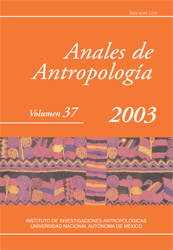Ambiente y cultura en la agricultura tradicional de México: casos y perspectivas
Main Article Content
Abstract
Since 1930, three ways of thinking about the relationship between nature andculture have developed. The first recognizes the dependence of culture on nature. This is due to anthropological studies which were carried out in “primitive” societies. The second, in the 1960’s emphasizes that culture dominates nature, that as technology advances culture depends less on nature. The third, in the 1980’s, argues that nature and culture are interrelated phenomena, that culture (man) should manage nature more wisely because the survival of life depends on nature. This paper deals with the importance of diachronic studies in order to understand cultural mechanisms developed by several rural societies to take care of their natural resources. Fantastic characters invented by these societies to protect their natural resources were chosen to show the ideological changes that have occurred as time passes as shown in two charts. These beliefs and imaginary beings live in natural areas and keep vigil over their use, punishing those who abuse their exploitation. There are also beings that are believed to reduce the impact of climatic events such as rain and hurricanes. As the communities have lost their natural resources the belie in these beings changes or disappears. With this paper we have just scratched the surface of the relationship of culture and nature, and more case studies are needed.
Downloads
Article Details
How to Cite
González Jácome, A. (2010). Ambiente y cultura en la agricultura tradicional de México: casos y perspectivas. Anales De Antropología, 37(1). https://doi.org/10.22201/iia.24486221e.2003.1.16738
Citas en Dimensions Service
Esta revista usa una licencia CC del tipo CC BY-NC-ND 3.0. Se maneja bajo el esquema de acceso abierto, con una licencia Creative Commons Attribution-NonCommercial-NoDerivs 3.0 Unported.
